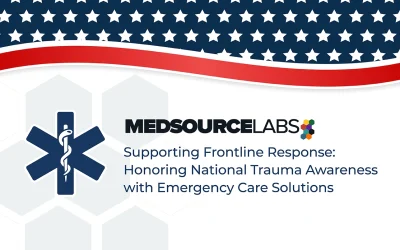Unmasking Racial Disparities in Medical Illustrations
Better Patient Outcomes Through Better Representation
Medical illustrations play a crucial role in educating healthcare professionals and the public about the intricacies of the human body and various medical conditions. However, an issue that often goes unnoticed is the pervasive racial disparity in these illustrations. The lack of diversity in medical imagery not only perpetuates stereotypes but also contributes to disparities in healthcare outcomes.
The Current Landscape
Think about the last time you saw a medical illustration in a textbook, pamphlet, or online resource. Chances are, the images predominantly featured white individuals, perpetuating the notion that the default human body is Caucasian. This underrepresentation of diverse racial and ethnic groups can have serious consequences, both in the medical field and in society at large.
Healthcare Disparities
Beyond medical education, the lack of diversity in medical illustrations can contribute to healthcare disparities. Patients from different racial and ethnic backgrounds may not see themselves reflected in educational materials, potentially leading to a lack of understanding or mistrust of medical information. This can impact communication between healthcare providers and patients, hindering effective care and contributing to health disparities.
Impact on Medical Education
Medical education relies heavily on accurate and inclusive visual representations to train the next generation of healthcare professionals. When illustrations primarily showcase one racial or ethnic group, it can lead to biased perceptions, reinforcing stereotypes and potentially compromising patient care. For example, if a medical student is predominantly exposed to images of conditions of white skin, they may struggle to recognize the same conditions in patients with darker skin tones.
The Call for Change
Recognizing the importance of representation, advocacy groups and healthcare professionals are calling for a more inclusive approach to medical illustrations. The push for diversity extends beyond skin color to include variations in body shapes, sizes, and features that accurately represent the rich tapestry of human diversity.
![Chidibere-Cervical-400x425[1]](https://medsourcelabs.com/wp-content/uploads/2024/06/Chidibere-Cervical-400x4251-1.webp)
Chidiebere Ibe @ebereillustrate “Cervical Spondylosis” Instagram, November 24, 2021. https://www.instagram.com/p/CWqnIAHg9hT/
Steps Toward Inclusivity
![Diverse-collaboration-200x158[1]](https://medsourcelabs.com/wp-content/uploads/2024/06/Diverse-collaboration-200x1581-1.webp)
Diverse Collaboration
Encouraging collaboration among artists, medical professionals, and researchers from diverse backgrounds can lead to more accurate and inclusive medical illustrations.
![education-awareness-200x158[1]](https://medsourcelabs.com/wp-content/uploads/2024/06/education-awareness-200x1581-1.webp)
Education & Awareness
Medical institutions and publishers should prioritize educating professionals about the impact of racial bias in medical imagery. Increased awareness can drive change from within the industry.
![research-298-100x100[1]](https://medsourcelabs.com/wp-content/uploads/2024/06/research-298-100x1001-1.webp)
Inclusive Research
Medical research should actively seek to include diverse populations in studies, ensuring that findings and illustrations accurately represent the spectrum of human experiences.
![community-involvement-200x188[1]](https://medsourcelabs.com/wp-content/uploads/2024/06/community-involvement-200x1881-1.webp)
Community Involvement
Engaging with communities and patients during the illustration creation process can provide valuable insights, ensuring that the final product is culturally sensitive and representative.
Honoring Innovation
Featured Black Medical Illustrators for Black History Month
In honor of the 2024 Black History Month theme: “African Americans and the Arts” we will highlight the artists and the groups that are working for positive change in addressing these disparities.
Chidibere Ibe
First Black Medical Illustrator
![Chidiebere-Ibe-400x444[1]](https://medsourcelabs.com/wp-content/uploads/2024/06/Chidiebere-Ibe-400x4441-1.webp)
Chidiebere Ibe is the first black medical illustrator from the Igbo ethnic group and is a native of Ebonyi State, Nigeria. Presently, he is a Medical Illustrator, renowned for the creation of the Black Fetus Illustration.
Chidiebere Ibe’s illustrations are a celebration of diversity and inclusion in a space that has historically lacked it. His accomplishments open doors for aspiring Black artists who may have felt underrepresented in the world of medical illustration. His journey speaks to the power of representation and the importance of diverse voices in every corner of the professional landscape.
In celebrating Chidiebere Ibe’s groundbreaking achievements, we not only acknowledge his brilliance but also pave the way for a more inclusive future in the world of medical illustration. Ibe inspires us to challenge preconceived notions, embrace diversity, and recognize the immense value that different perspectives bring to every facet of our lives.
Learn more about Chidiebere Ibe and his work here: https://www.chidiebereibe.com/
![Chidibere-Ibe-pic-2-300x231[1]](https://medsourcelabs.com/wp-content/uploads/2024/06/Chidibere-Ibe-pic-2-300x2311-1.webp)
![Chidibere-Ibe-pic-1-300x231[1]](https://medsourcelabs.com/wp-content/uploads/2024/06/Chidibere-Ibe-pic-1-300x2311-1.webp)
![Chidibere-Ibe-pic-3-300x231[1]](https://medsourcelabs.com/wp-content/uploads/2024/06/Chidibere-Ibe-pic-3-300x2311-1.webp)
![Chidibere-Ibe-pic-4-300x231[1]](https://medsourcelabs.com/wp-content/uploads/2024/06/Chidibere-Ibe-pic-4-300x2311-1.webp)
Ibe, Chidiebere. “Causes of Pleural Effusion” “Cervical Spondylosis” “Sickle Cell Disease” “Eczema”. https://www.chidiebereibe.com/works/. 02/08/2024.
Ni-ka Ford
Board Certified Medical Illustrator
![Ni-ka-2-400x480[1]](https://medsourcelabs.com/wp-content/uploads/2024/06/Ni-ka-2-400x4801-1.webp)
Ni-ka Ford is a Board Certified Medical Illustrator and the founder of Enlight Visuals, hailing from Atlanta. Ni-ka embarked on her journey by earning a Bachelor’s in fine arts from Georgia Southern University. Her passion for merging art and science led her to the University of Illinois at Chicago, where she earned a Master of Science in Biomedical Visualization in 2017.
Ni-ka has crafted an impressive portfolio of science graphics, surgical illustrations, 3D models and visual aids for medical education. Her work extends to illustrations for journal publications, research grants, and even the co-organization of SciVizNYC, a prestigious scientific visualization conference hosted by the Icahn School of Medicine at Mount Sinai and Scientific American.
Beyond her artistic achievements, Ni-ka is a devoted advocate for inclusive representation within medical and healthcare materials. Actively engaged in the Association of Medical Illustrators (AMI), she serves as the Chair for the Diversity Committee, showcasing her commitment to fostering diversity within her field.
Learn more about Ni-ka Ford and her work here: https://enlightvisuals.com/
![Ni-ka-pic1-1-300x231[1]](https://medsourcelabs.com/wp-content/uploads/2024/06/Ni-ka-pic1-1-300x2311-1.webp)
![Ni-ka-pic2-300x231[1]](https://medsourcelabs.com/wp-content/uploads/2024/06/Ni-ka-pic2-300x2311-1.webp)
![Ni-ka-pic3-300x231[1]](https://medsourcelabs.com/wp-content/uploads/2024/06/Ni-ka-pic3-300x2311-1.webp)
![Ni-ka-pic4-300x231[1]](https://medsourcelabs.com/wp-content/uploads/2024/06/Ni-ka-pic4-300x2311-1.webp)
Ford, Ni-ka. “Nasolabial fold procedure” “Botox injection zones” “Racial disparities in common abdominal procedures” “Botulinum Neurotoxin for head and neck disorders”. https://www.enlightvisuals.com/illustration. 02/15/2024.
Sana Khan
Medical Illustrator and Animator
![San-Khan-400x446[1]](https://medsourcelabs.com/wp-content/uploads/2024/06/San-Khan-400x4461-1.webp)
Sana Khan is a medical illustrator and animator who provides a visual journey into the intricate landscapes of anatomy and healthcare. Her journey is marked by a passion for both art and science. Trained to distill complex medical concepts into visually accessible forms, she collaborates with healthcare professionals, educators, and researchers to bring medical information to life.
In each stroke of her pen, Sana Khan’s artistry elevates medical understanding.
Her illustrations grace medical textbooks, research publications, and educational materials, making her a key contributor to the visual language of healthcare.
As we appreciate Sana Khan’s work, we celebrate not only her artistic talent but also her invaluable role in enhancing medical education and communication. In a world where science meets aesthetics, Sana stands as a visionary, using her skills to illuminate the marvels of the human body.
Learn more about Sana Khan and her work here: https://sfkhanvisuals.com/
![San-Khan-1-300x231[1]](https://medsourcelabs.com/wp-content/uploads/2024/06/San-Khan-1-300x2311-1.webp)
![San-Khan-3-300x231[1]](https://medsourcelabs.com/wp-content/uploads/2024/06/San-Khan-3-300x2311-1.webp)
![San-Khan-2-300x231[1]](https://medsourcelabs.com/wp-content/uploads/2024/06/San-Khan-2-300x2311-1.webp)
![San-Khan-4-300x231[1]](https://medsourcelabs.com/wp-content/uploads/2024/06/San-Khan-4-300x2311-1.webp)
Khan, Sana. “Saggital brain portrait” “Internal Palm and Digits.” “Slime mold Infographic” “The Pathology of Frostbite“.
https://www.sfkhanvisuals.com/ 02/29/2024.


